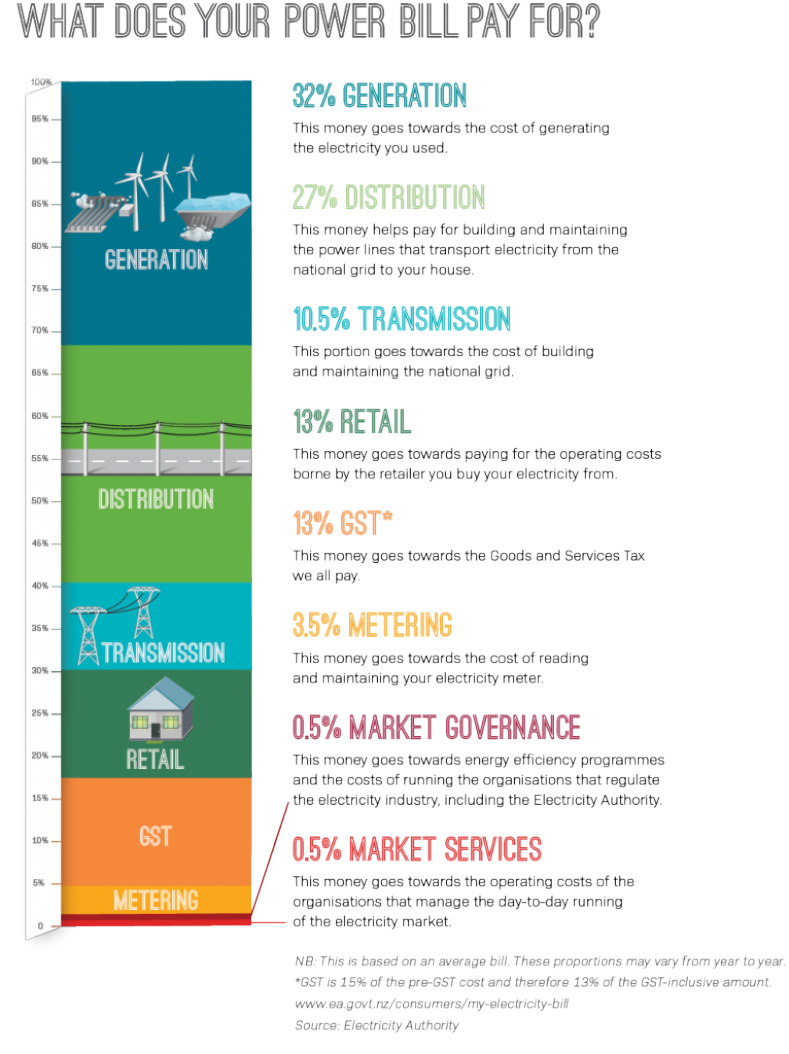What charges are on my power bill?

When you sign up for a new power plan, most providers will offer you the option to have your power bill sent online or through the post. The total amount that appears on your bill is made up of several components.
We’ve provided a breakdown below of the main components of your power bill, areas where you can cut your power bill, and what your power bill actually pays for.
What is on my power bill?
Most bills will include costs for fixed (or daily) costs and variable charges. Your power bill will usually include two components:
- Fixed charges which are shown as cents or dollars per day. You will be charged the fixed rate each day regardless of how much power you use.
- Variable charges which are for the actual power you used. The variable charge is based on the kilowatt hours that you have used and will be charged at a rate you’ve agreed with your power provider.
How to cut down on your power bill
We have a more detailed breakdown below of what the money on your power bill actually pays for.
Surprisingly only around 13% goes to your power retailer and the rest goes to generating and distributing power, GST and regulatory bodies. Although most of these functions may not appear “negotiable”, there are still ways to cut down on your power bill.
1. Compare power plans regularly
A key way to keep your power bill down is to compare power plans regularly to make sure you are getting the best deal. A government review last year found that there was increasing competition in the electricity marketing with, “A two-tier retail market appears to be developing: those who actively shop around enjoy the benefits of competition, and those who don’t pay higher prices”.
If you’ve been with your provider for a while, it pays to shop around and compare plans. Or, set an annual reminder for yourself, to check your current plan and make sure you are getting the best deal.
2. Get a joining bonus or joining credit
Power Compare bring together offers from New Zealand’s top power providers. Whether it’s a $400 joining credit from Genesis Energy or a $150 credit from Orcon Power. Find a great deal when you sign up with a new power provider on Power Compare.
3. Take advantage of prompt payment discounts
In addition to joining bonuses, power providers are also getting more competitive with their prompt payment discount. At the time of writing Contact Energy are offering up to 24% prompt payment discounts!
Check whether you can get a better deal on prompt payment discounts by searching for your address on Power Compare and sort your results by ‘discount’
4. Make sure you are on the right user plan
New Zealanders can choose to sign up for a standard user or low user power plan, depending on how much power they use every year. Low user plan and standard user plans charge customers slightly differently for their electricity, and the cost of being on the wrong plan can really add up. A government study in 2018 estimated that being on the wrong plan could be costing New Zealanders around $39 million per year. Are you a standard user or a low user?
5. Tips to cut your power bill in winter and summer.
Reduce the amount of power you user by checking out our top ways to reduce your power bill in winter and summer
What does your power bill pay for?

An average power bill breaks down as:
- 32% Generation: goes toward the cost of generating the electricity you used
- 27% Distribution: goes toward the cost of building and maintaining the power lines that transport electricity from the national grid to your house
- 10.5% Transmission: the cost of building and maintaining the national grid
- 13% Retail: this portion goes to your electricity retailer and covers their operating costs
- 13% GST
- 3.5% Metering: covers the cost of reading and maintain your electricity meter
- 0.5% Market Governance: goes toward energy efficiency programmes and the costs of regulatory organisations like the Electricity Authority
- 0.5% Market Services: Covers the operating costs of the organisations that manage the day-to-day running of the electricity market.

